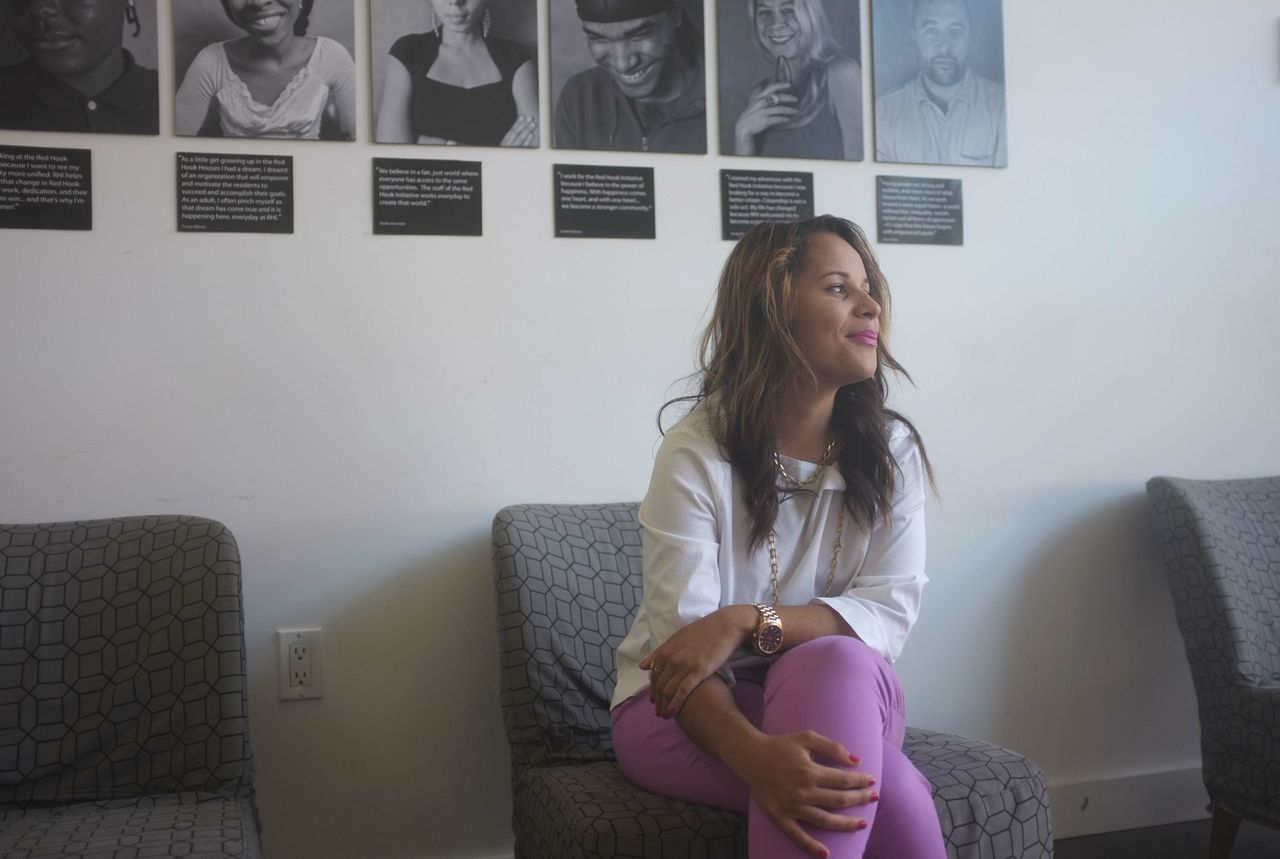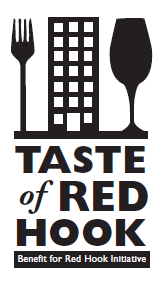
When Hurricane Sandy hit the waterfront of Red Hook on October 29th last year, the Brooklyn neighborhood took the brunt of the storm. The power went out, streets and basements flooded, and phone lines and cell phone service went down. Many people in the community emerged as leaders, working inside and outside the neighborhood to help organize a response. With a jury-rigged internet system set up, some even tweeted about it, providing a crucial link between residents, family members outside the neighborhood, and relief workers. City Atlas recently spoke with Frances Medina, who led social media communications for the Red Hook Initiative (RHI) during the storm and the recovery.
RHI is a nonprofit that works to improve life for the 6000 residents of the Red Hook Houses, Brooklyn’s largest public housing project. RHI’s wifi system was so successful during the period following the storm, when power was still out across large sections of the city, that it has become a case study for future disaster relief. (More details on the innovative methods used here and here.)
But technology only gets you so far; Medina helped provide the flow of information and connection that stabilized the community in the days after Sandy. Drawing on insights from scaling Mt. Kilimanjaro to wading through flooded basements of Red Hook, the 23-year old woman’s message is direct and elegant, “Do what you love and do it well.” Our conversation follows:
City Atlas: How did you first become involved with the Red Hook Initiative?
Frances Medina: My sister introduced me — she trained as a peer counselor. I first started using the space in high school to go online, get work done. During my junior year, it was a place for me to access college applications. I was also trained as a peer educator alongside going to school and working full time.
It sounds like RHI is a big part of your life. How has it helped you?
RHI is more than just a non-profit org doing community development work. We are building a resilient community. Personally, RHI has been a blessing. The staff has been my second family for years and the space that was made available to me when I was growing up in Red Hook gave me access to resources I wouldn’t have otherwise. Not to mention, I was able to attend the University of Michigan with the encouragement and support of RHI. That was a great experience. I love my alma mater. I got to try a little bit of everything while I was there, like event planning, producing events, advocacy work, but it was a difficult transition back.
After college did you return to Red Hook?
Well, I was trying to find my place again. I was really feeling like I was lost, my life was hot mess working various jobs in the arts world and living in the Bronx…until the storm hit and my spirits were activated through my work with Hurricane Sandy relief efforts…then, after the storm I felt so deeply reconnected…but it wasn’t until I went to Kenya that the connection deepened.
You went to Kenya?
Yes, through the greater RHI community, I was given the opportunity to climb Mt. Kilimanjaro as part of a youth leadership program. It literally changed my perspective. It showed me that I have nothing to complain about. The experience showed me that people there work like 500 times harder than me. And that I need to take advantage of the opportunities I have…that I need to use those opportunities to better myself and my community.
So on top of the mountain you had an epiphany —
Yes, I came back down and said, ok, let’s change the world.
And step one was to come back to RHI?
RHI is a like a second home to me. So yes, I came back to a full-time position after I climbed the mountain this past January. Prior to the storm I was working as a development consultant and planned events. I love coordinating, I love organizing and I am always looking to get better. I started to use social media to engage people.
Back in college I used Twitter to sell tickets to the shows I was producing. For RHI, it is a way to reach people and let them in on what we are doing and how it is benefiting the organization and to thank people. Like, if we needed some gift cards for a raffle or event, I would tweet about it and people would step up and give us help. It was great to see. Social media can reach places we can’t otherwise.
It sounds like you really harnessed its power during Sandy.
Well, before the storm hit, I had just finished planning our hugely successful event, A Taste of Red Hook. When the storm hit I was in the Bronx and was trying to think of what I could do from there. I wanted to help from a distance and communicated that to Jill Eisenhard, our executive director. So there I was in the Bronx for the first two days doing social media work where I had internet and also from my cell phone. After 2-3 days when the trains started running again, I made my way down to Red Hook to handle social media. I was a doing minute-to-minute updates about coordinating food and supply drop-offs, organizing supplies.
You were doing this all from your phone in Red Hook?
We didn’t have internet in Red Hook because the Sprint antennas were down, so I tweeted from a desktop while there and from my phone when elsewhere. Around-the-clock tweets were effective.
How did you decide what tone to use in your messages? Did it change based on who you were targeting?
I kept in mind that I was representing something larger then myself, I was representing RHI and I used Twitter to relay information. I tried to respond to people personally which was what kept them engaged.
I understand that you used Facebook too, helping to increase your following to 220 and had over 2,000 “likes” for your posts. When did you use Facebook versus tweeting?
I used Twitter to reach potential donors. It was easy by using hash tags. I sent tweets for volunteers and received messages from foundations. Volunteers and organizations reached out. I received so many messages from people who wanted to help, and from corporate people and foundations too. Facebook was more of a way to get the moms, and the aunts who wanted to send packages, reach people from other states. It was more sporadic. Basically I used Twitter more locally, it was more immediate.
Did your following stay as dedicated after the storm?
Well, we didn’t continue to be 25,000 people overnight, but we have had a steady growing following since then. I still use Twitter to engage people today and to inform them of long-term Sandy work. Also, more people have gained interest in our mission: to serve people in the neighborhood and those in public housing.
Are there other forms of outreach that worked for you?
Well, we didn’t have Instagram until later, but that works too. Basically I urge all of the organizations I work with to use it [social media]. RHI is running a digital boot camp now, to install wifi and extend our digital outreach.
That sounds really exciting. Are you working on other projects to rebuild after the storm?
We just confirmed the date, October 22 for the next Taste of Red Hook.
We are engaging a lot of businesses that experienced losses during the storm. Last year we had 420-450 people — and we hope to have more this year! It will be a week before the anniversary of Sandy. We will be communicating, “Look at how far we’ve come since then!”
You and organization certainly have come a long way. Do you have advice for others about how to move forward?
If you love something and are good at it, stick with it. Stay as engaged as possible. Keep learning every single day.
